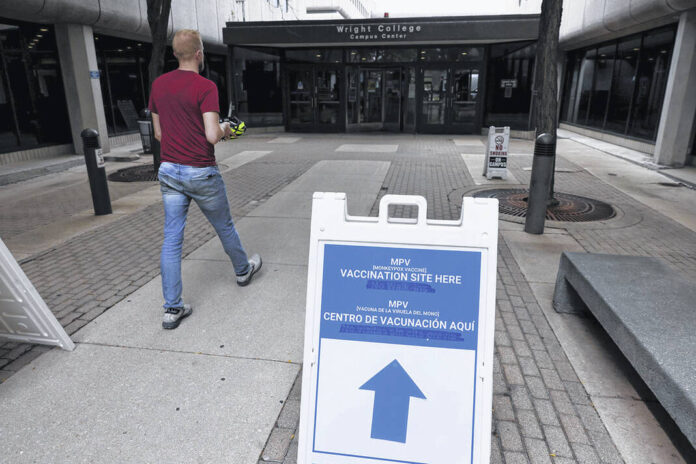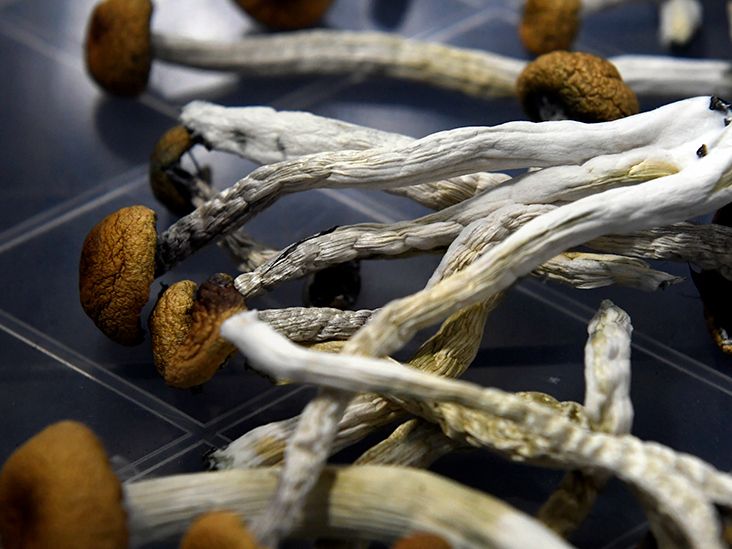In 2019, there were seven cases of congenital syphilis, or cases where a newborn baby was infected during pregnancy, in Columbus, Ohio. Two years later, that number grew to 20. And now?
“We’ve already seen 28 cases since the beginning of the year,” said Dr. Mysheyka Roberts, the city’s health commissioner. One of this year’s cases, she added, ended in the death of a child.
According to the federal Centers for Disease Control and Prevention, from 2017 to 2021, the number of cases of congenital syphilis in the United States increased by a whopping 184%. But that’s just one element of the explosive growth of sexually transmitted infections, known as STIs, which one expert in the field describes as an “out-of-control pandemic” that began in the 2010s and has taken on an extraordinary character. during the COVID-19 pandemic.
Public health experts say that COVID-19 has contributed to the rise in sexually transmitted infections by preventing people from getting routine health care where STI screenings can be done. It also diverted health workers from working with STIs to focus on COVID-19.
With COVID-19 still festering, battered and underfunded health workers are also tasked with trying to turn the tide on rising cases of STIs, including monkeypox, which is primarily spread through sexual contact.
“These are shocking numbers,” said David Harvey, executive director of the National Coalition of Sexually Transmitted Disease Directors, who described the situation as “out of control.” (Harvey says that despite his organization’s name, it prefers the term STI as less stigmatizing.)
The total number of syphilis cases, including congenital and sexually transmitted syphilis, increased by nearly 70% between 2017 and 2021, according to preliminary CDC figures. It increased by almost 28% in 2021 alone, the UK’s second year. Pandemic of coronavirus infection covid19.
In 2021, the rate of syphilis in the United States reached 51.5 cases per 100,000 people, the highest rate since 1990 and the highest total number of cases (171,074) since 1951.
The rise in congenital syphilis was even steeper than sexually transmitted syphilis: 184.5% over five years and 24.1% between 2020 and 2021. In 2020, the most recent year for which the CDC has data, there were 149 stillbirths or infant deaths. linked to congenital syphilis, more than three times as many as four years ago.
“You can argue that every case is preventable,” Leandro Meno, director of the CDC’s Division of STD Prevention, told Stateline. They represent “a failure in our system,” he added. (Forty-two states and Washington, D.C., require at least one screening for syphilis during pregnancy, although this only occurs if the patient receives prenatal care.)
Cases of chlamydia and gonorrhea also increased significantly between 2020 and 2021, although not as dramatically as syphilis. Like syphilis, infection rates for chlamydia and gonorrhea have been increasing over the years, although chlamydia’s growth has been more uneven than the other two.
Overall, 2.5 million people in the United States will be infected with one of these three STIs in 2021. The CDC has not yet reported the number of HIV cases in 2021.
Mena said STI rates have been on the rise for a decade, a trend he and many other experts attribute to a lack of stable public health funding, particularly for STIs. Federal funding for STI has been flat for nearly two decades. Adjusted for inflation, this means a 40% reduction in funding over that time, according to a study published in 2021 by the National Academies of Sciences, Technology and Medicine.
This summer, Harvey’s organization asked the CDC for an additional $344 million in funding to help strengthen the capacity of state and local health departments to fight STIs by hiring and training staff. He requested an additional $100 million to expand access to sexual health services in schools to stop the spread of STIs, HIV and teen pregnancy.
Federal money often comes with restrictions, denying local health authorities the flexibility they say could make them more efficient. For example, Roberts, of Columbus, said the STI funding her city receives through the CDC limits how much can be spent on screenings, even though screenings are her agency’s biggest need.
“The limitations on the funding we get, on what we can and can’t use the funding for, that’s really a hardship,” she said.
Meno said localities and states can have more flexibility in spending federal money on STIs if they can justify it.
In last year’s Saving America Act, Congress approved $1 billion in public health spending over five years to fight the epidemics. A portion of this funding will go toward STI prevention and treatment.
“It doesn’t even come close to solving the problem,” said Rebecca Horowitz, senior program analyst for HIV, STIs and viral hepatitis at the National Association of County and City Health Officials. “This is a great investment in disease intervention, but we need STI clinic services, provider education and community outreach.”
Funding shortages over the years have led to the closure of many public venereal disease clinics. That alone has contributed to an increase in STIs, advocates say. Research shows that many patients prefer to go to such clinics for sexual health services, including testing and treatment for STIs. Same-day appointments and lower cost were the most commonly cited reasons.
Health officials say fewer clinics lead to fewer STI tests, less treatment and more transmission of the infection.
Other factors have also fueled the rise in STI rates. Mena of the Centers for Disease Control (CDC) cited a decline in condom use among gay and sexually active high school students. Instead, long-acting contraceptives are becoming an increasingly popular form of birth control for heterosexual high school couples, while gay men are less likely to use condoms because of the availability of highly effective antiviral drugs for HIV.
Harvey, of the STD Directors’ Coalition, also pointed to a decline since the 1990s in STI education aimed at young people and health care providers. In both cases, he said, the decline resulted in less testing and therefore less detection.
He also said that the epidemic of opioid and methamphetamine use over the past two decades has contributed to the rise in STIs. Studies have shown a link between drug use and STIs.
“Methamphetamine and opioids are at the intersection between substance abuse and risky sexual behavior,” Harvey said.
All of this was happening when COVID-19 hit in 2020, but the COVID-19 pandemic made things worse.
Access to health care was severely limited, especially early in the pandemic, leading to even less STI testing and treatment, officials said. In Columbus, Roberts said, her STI service workers did not provide services at community events because those events were canceled.
Health officials also suspect that for many people, COVID-19 has increased sexual activity at a time when other forms of recreation have been banned.
“One of the things you can do besides going to the bar is have sex,” Horowitz said.
COVID-19 has also forced many healthcare workers who were focused on STI surveillance and testing to shift their focus to COVID-19.
“STD prevention people have been stretched thin dealing with COVID, and now monkeypox, and in some places polio, which has led to cuts in STD prevention staff and capacity,” said Kate Heyer, senior director of STD prevention. on Infectious Diseases Association of State and Territorial Health Officials. “And it’s a workforce that’s been strained from the start.”
It’s a familiar pattern that didn’t start with COVID-19. Lacking funding, public health authorities are often diverting resources to address the current crisis.
“We’ve had Zika, Ebola, COVID, and now monkeypox. All of those things depend on the same skill sets in the local health department as STI,” Horowitz said. “We don’t have new people coming into the health care field who can also get STIs and other new infectious diseases.”
As COVID-19 recedes, Horowitz expects the sharp increase in syphilis rates to slow. But refuse? Not without additional resources, she said.
“I hope we don’t see an increase like we’ve seen, but I don’t expect we’ll see a reduction,” she said. “Not in the short term.”
https://www.limaohio.com/news/2022/10/01/shocking-rise-in-stis-during-covid-alarms-health-workers/



